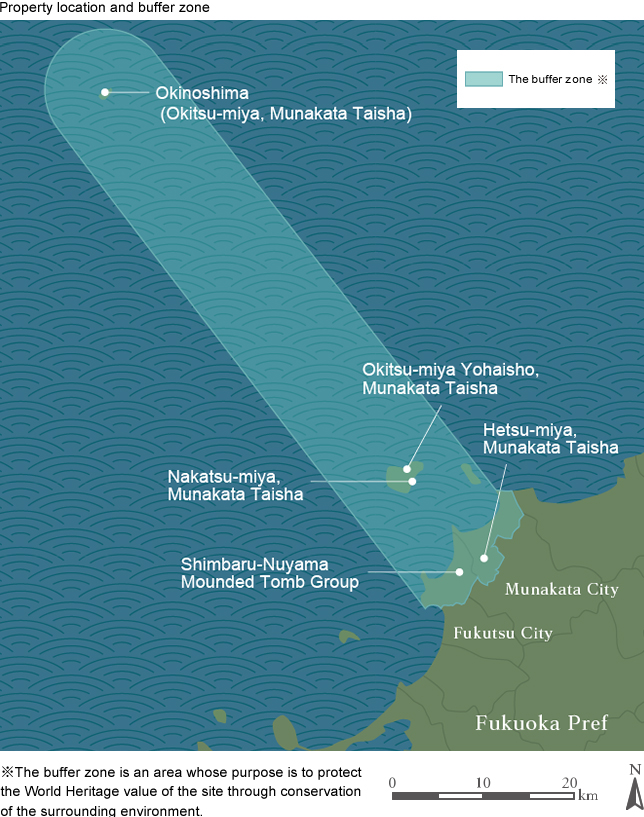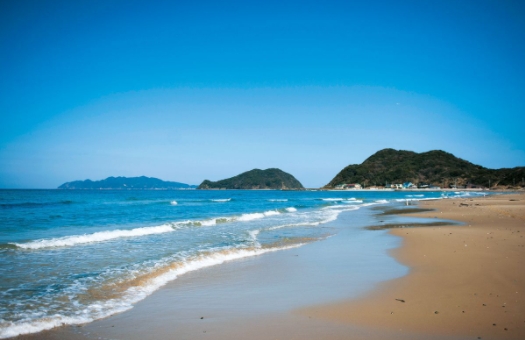
To preserve this World
Heritage Site for future generations
The Sacred Island of Okinoshima and Associated Sites in the Munakata Region have been preserved and passed down by the local people, who have nurtured a tradition of faith in the island.
The goal for a World Heritage Site is to preserve it as a collective human legacy, and pass it down to future generations. Preserving a World Heritage Site requires a structure to manage preservation efforts. The shrine precincts and mounded tomb group of Munakata Taisha have been designated as Cultural Properties and are legally protected as such.
The challenge is not just a matter of protecting the cultural sites themselves. It is also about preserving the surrounding ocean and rich natural landscape, and the livelihood and religious faith of the local people, all of which constitute the World Heritage value of the sites.
To protect this group of properties and its surrounding landscape, however, requires not only a framework of legal protection but also the active participation of the local population that has inherited the faith from generations past.
The landscape we see today has been formed through the daily activities of the people who have lived here since ancient times.
That ordinary-looking landscape tells a hidden story of the history and meaning of this property.
We are working together with local residents to preserve the property, including the local culture and traditions that are associated with it.

Gifts of the sea
To the coastline of the Munakata region, which is described as the "edge of an opened parasol", much debris are washed up on shore due to the effects of ocean currents and wind.
The season for gathering driftwood and pieces of flotsam is winter. Northwesterly seasonal winds from the continent make for rough seas, and due to the effects of the Japan Current and Tsushima Current, many objects are strewn across the beach.
Objects washed up on shore tell many stories. The Genkai Sea, due to its rough waves and rapidly moving currents, is famed as a perilous stretch for boats to pass through.
Since ancient times, freight and debris have been washed ashore from shipwrecked vessels along the Munakata coast. Things collected there were looked upon as sacred objects, and were used to help offset the cost of repairs on subordinate shrines of Munakata Taisha. The imperial court at that time formally recognized the privilege, and that area of the sea was governed by Munakata Taisha as a sacred precinct.
In recent years, however, plastic bags and containers, styrofoam and other garbage has also been carried ashore by the currents. Some pine groves exhibit conspicuous damage from beetles that feed on pine trees.
The local people want to leave a beautiful shoreline for future generations, and with that thought in mind, neighborhood associations and volunteer organizations, schools, businesses and other groups are engaging in conservation activities such as coastal cleanup projects, planting pine seedlings, and other works.
Thanks to their devoted efforts, a beautiful coastline worthy of its classic description as "white sand and green pines" is being preserved.



